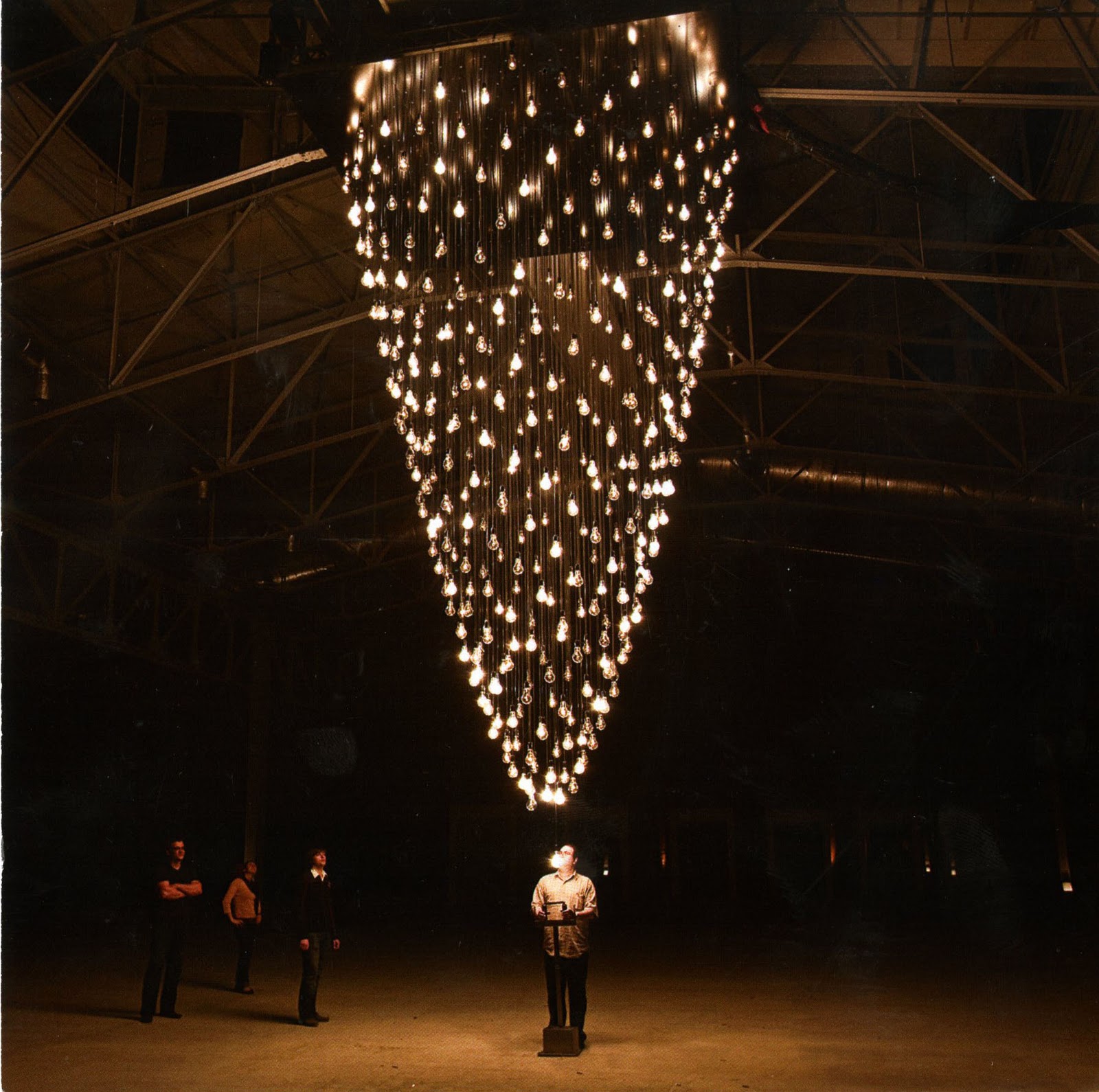One project I admire.
Rafael Lozano-Hemmer’s Pulse Spiral
https://www.youtube.com/watch?v=2LVvxywPQZI&list=UUN8Aax8XICzHJzLScciViWQ&index=155

The project is a responsive biofeedback sculpture that is made from 400 lightbulbs arranged in accordance to an equation of a spatial distribution found in the arrangement of leaves and cells in plants. The sculpture responds to the heartbeat of the participant, who holds a sensor beneath the piece.
What interests me is the ability to visualize the presence of a person. A certain intimacy is derived from feeling other people’s heartbeats, but this augmented no longer remains something intimate, but rather overpowering.
I would like to see what this sculpture could become if it involved more than one person interacting with it. What would become of it if it responded to two or more heartbeats? I think the sculpture missed an opportunity to play with chaos. Also, while the link between plant and animal is created through the equation’s structure, I feel as though this bridge between the two could have been built a bit stronger, and more comparisons between plant and animal could have been expressed.
–
One project that surprised me.
Anna Dumitriu’s Cybernetic Bacteria 2.0
https://www.youtube.com/watch?v=XQTdvvVH-kk

Cybernetic Bacteria is an installation and an ongoing project exploring the similarities between digital data communication and bacterial communication. Within the gallery space, digital networks such as wireless and Bluetooth activity are taken in real time along with the chemical communication of bacteria within the space and combined into a new form, creating a somewhat hybrid of the two, through the exploration of their respective complexities. This new life form is a result of both data forms placed through a computer program, with access to both our biological data as well as communicative.
This project pleasantly surprised me as it provided insight to the overlooked fact that there are always various interactions taking place at microscopic levels, and we as humans have developed our own separate system of interactions, one that has little interaction with the rest of the ecosystem. It is, however, a theoretical life form, and there is no ‘real’ new form.
The artist Anna Dumitriu had a previous version of this project which was a performance piece a plastic tube of liquid agar jelly was stuck into the earth, and the artist manually placed a hormone used by bacteria for communication upon speaking the words “I’m here.” While I admire both projects, there is something more fleeting and intimate about the performance. It is more of an interaction rather than a creation, like the 2.0.
–
One project that could have been better.
Richard Harvey’s Floating Forecaster
https://www.youtube.com/watch?v=OdUtKpxX_sg&list=UUN8Aax8XICzHJzLScciViWQ

The Floating Forecaster is a display consisting of balls placed within a grid which responds to patterns and sequences from an iPhone interface. The display reinterprets weather information (or at least that was the initial intention of the artist), with the balls forming in the air what can be interpreted as clouds or sunshine or storms.
While creating a very present and lively piece, as a representation of weather, the piece fails to deliver and comes off as more toy-like. The uniformity of the balls and their restrictions don’t particularly allow for a sense of weather and atmosphere. The idea of condensing an entire feeling of atmosphere into minimal pieces and space is beautiful as well as functional, but it had only managed to become a collaborative toy. Even as a collaborative toy, it is restricted in interaction.




